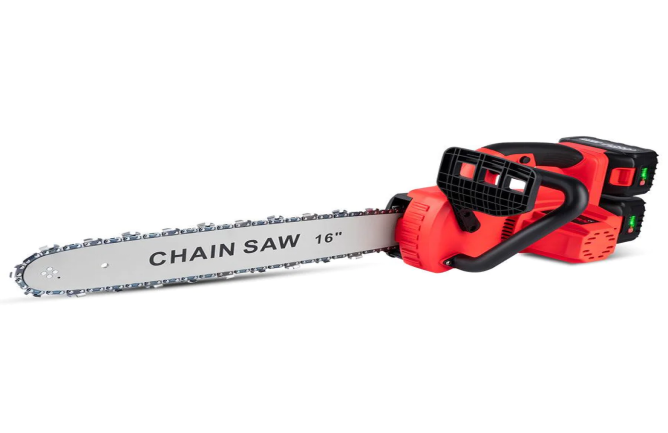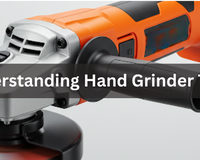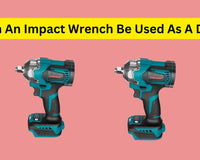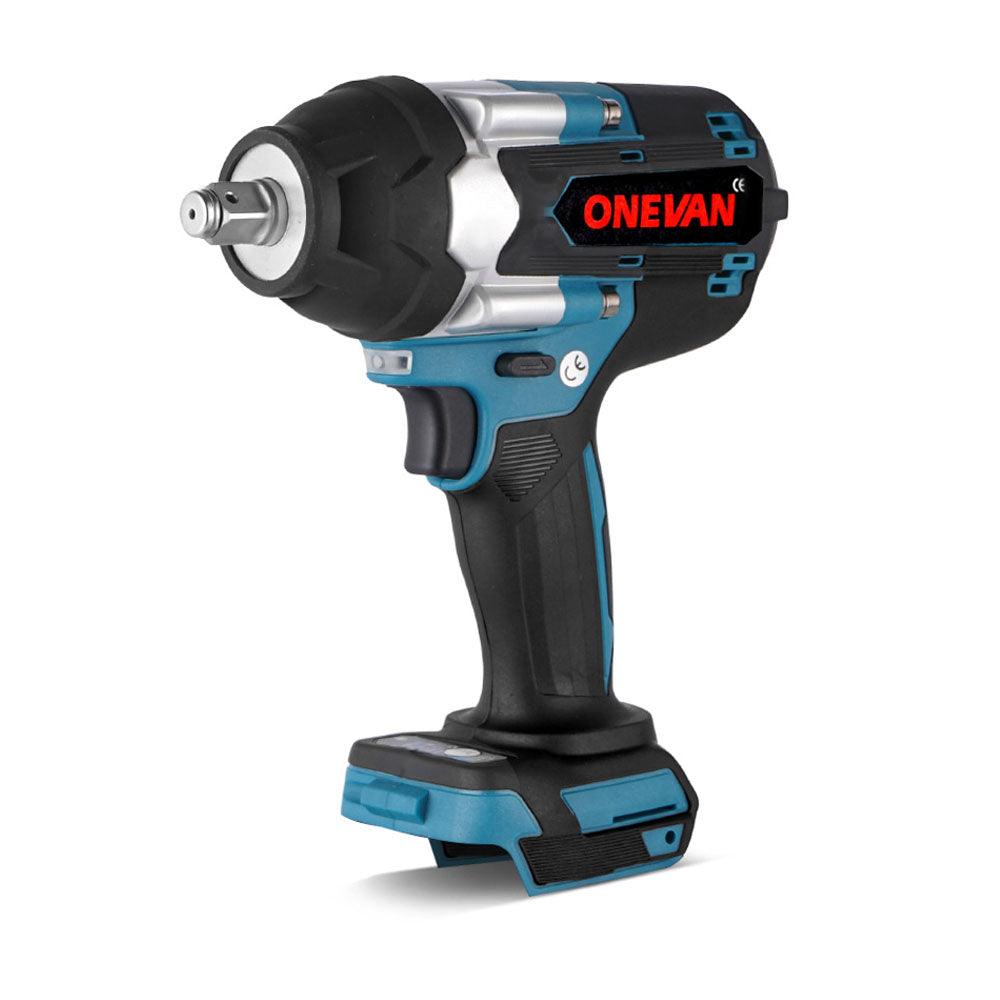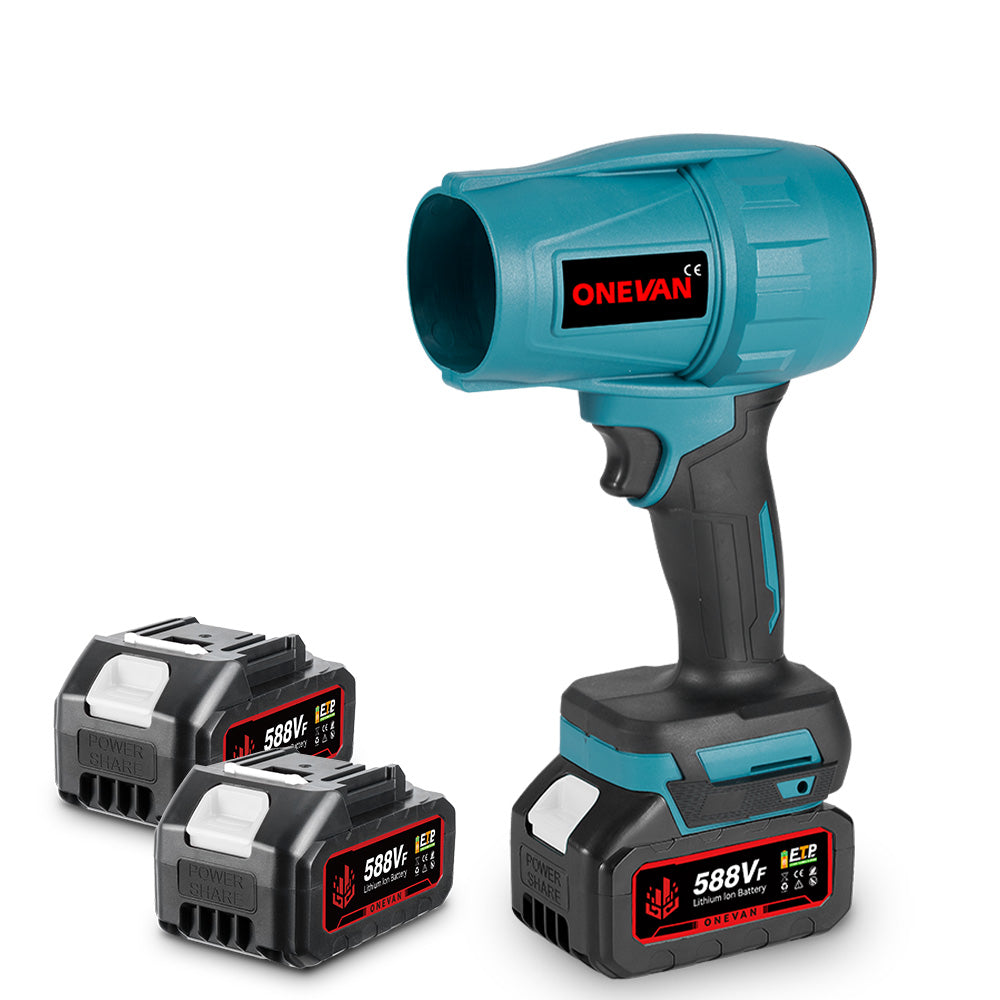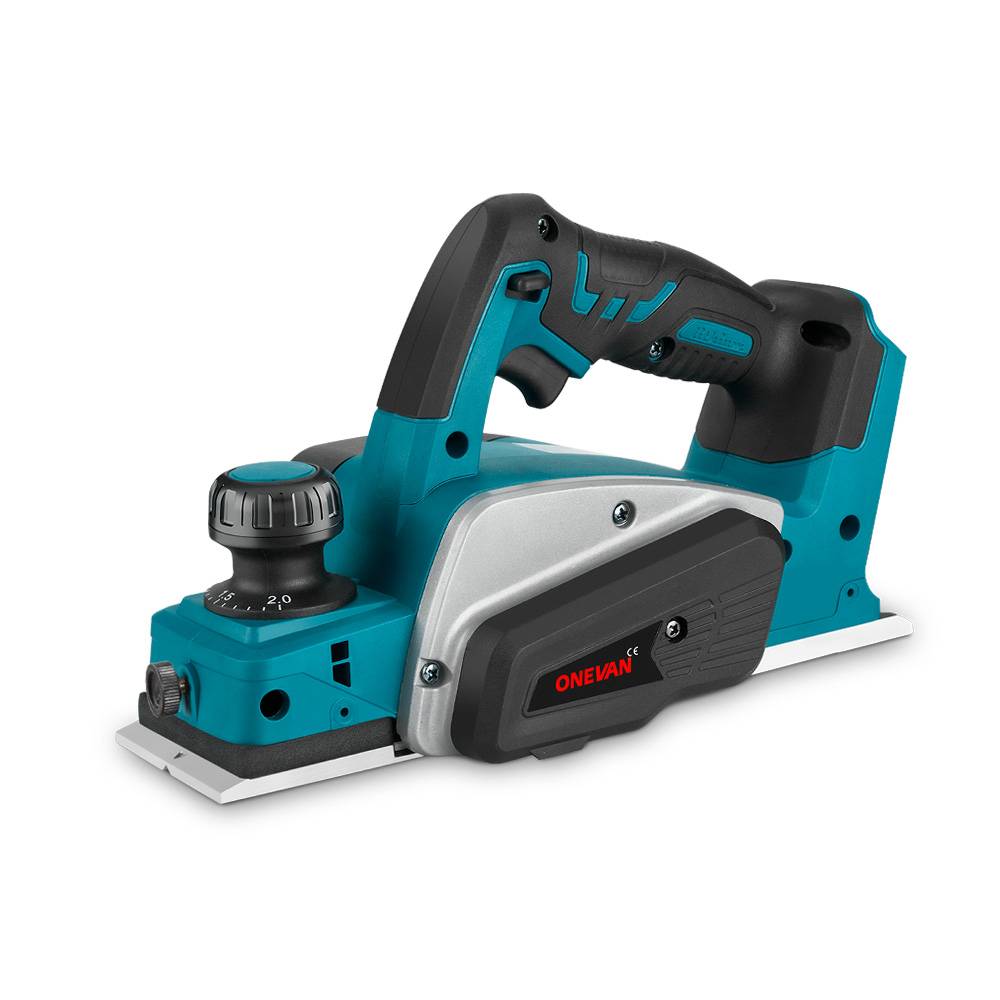1. Introducción
Las sierras inalámbricas se han convertido en herramientas importantes para los carpinteros, ya que aumentan su productividad y ayudan a proteger el medio ambiente. Partiendo de diseños básicos, estas herramientas han evolucionado con el progreso industrial y el mayor enfoque en la protección de la naturaleza.
Ya sea que usted sea un trabajador forestal, un entusiasta del bricolaje o un amante de la tecnología, la historia de las sierras inalámbricas proporciona información valiosa sobre las herramientas que influyen en nuestro mundo.
2. La historia temprana de la motosierra
2.1 Orígenes y propósitos iniciales de la motosierra
A principios del siglo XIX, en Inglaterra ya se utilizaban sierras, incluidas grandes sierras circulares y de cinta, para cortar madera del tamaño que se necesitaba. Pero para troncos más gruesos, las hachas seguían siendo la herramienta preferida porque las sierras no podían con ellos.
¿Sabías?
Según Jennifer Walker-Journey (2024), a finales del siglo XVIII, los médicos escoceses John Aitken y James Jeffray adaptaron una motosierra flexible, originalmente diseñada para facilitar el parto.
La motosierra flexible Aitkens, una herramienta innovadora, facilitó y hizo más precisa la extracción del hueso pélvico durante el parto, causando menos daño a los tejidos cercanos. Tenía una cadena fina dentada y mangos en forma de lágrima para maniobrar fácilmente detrás del hueso púbico.
La historia de la motosierra moderna comienza con Bernhard Heine, un ortopedista alemán. En 1830, inventó la primera motosierra, el "osteótomo" (de las palabras griegas "hueso" y "cortador"), que se utilizaba principalmente en el ámbito médico y se operaba manualmente.
La motosierra tal como la conocemos hoy en día comenzó a desarrollarse en la década de 1920. Innovadores como Wolf en los EE. UU., Westfelt en Suecia y Stihl en Alemania desempeñaron un papel clave. Stihl, fundada en 1926, se convirtió rápidamente en una marca líder en la producción de motosierras, alcanzando una facturación anual de 1.600 millones de euros en 2004.
La idea principal detrás de la creación de las motosierras fue hacer que el trabajo forestal, que requería mucha mano de obra, fuera más fácil y rentable mediante el uso de máquinas.
A finales de la década de 1920, se introdujeron las motosierras de gasolina, que en un principio necesitaban dos personas para manejarlas debido a su diseño y peso, con el objetivo de asemejarse a las sierras tradicionales. Las motosierras de gasolina se utilizan hasta el día de hoy en la silvicultura. A continuación, se muestra un ejemplo de una imagen:
A pesar de su potencial para facilitar el trabajo forestal, las motosierras no se adoptaron rápidamente porque eran pesadas, difíciles de manejar y consumían mucho combustible, especialmente los modelos diseñados para dos personas. Las primeras versiones de estas motosierras para dos personas pesaban más de 60 kilogramos.
La primera motosierra diseñada para una sola persona salió al mercado en 1950, pero seguía siendo bastante pesada. En 1959, estas motosierras se habían vuelto más ligeras, llegando a pesar alrededor de 12 kilogramos, lo que indicaba una tendencia hacia diseños más manejables (las motosierras modernas suelen pesar entre 4 y 5 kilogramos, y las más grandes pesan entre 7 y 9 kilogramos).
Las motosierras se hicieron más populares y ayudaron a abordar la escasez de leñadores a fines de la década de 1950, haciendo que la profesión fuera más atractiva para la generación más joven.
Sin embargo, no todos estaban a favor de utilizar motosierras. Algunos pedían restricciones y debatían si eran mejores que las herramientas tradicionales, como las hachas.
Por ejemplo, en 1957, existía la preocupación de que la eficiencia de las motosierras pudiera reducir los precios pagados por el trabajo a destajo, lo que llevó a algunos leñadores a volver ocasionalmente a utilizar sierras de mano para ciertos trabajos.
2.2 Revolucionando la silvicultura: avances tecnológicos de las motosierras modernas
En 1959, Husqvarna lanzó la motosierra Husqvarna 90 con silenciadores innovadores que reducían considerablemente el ruido, estableciendo un nuevo estándar. Stihl introdujo el primer mango antivibración en 1964 y Husqvarna lo mejoró con la Husqvarna 180, lo que dio lugar a exportaciones a América del Norte.
En 1973, Husqvarna introdujo un freno de cadena automático que mejoró significativamente la seguridad de las motosierras y previno lesiones. En 1980, la Husqvarna 40 utilizó materiales compuestos livianos, lo que hizo que fuera más fácil y cómoda de usar durante períodos más prolongados.
En 2009, la función AutoTune de Husqvarna ajustó automáticamente el flujo de combustible, optimizando el rendimiento y reduciendo las emisiones. Luego, en 2012, Husqvarna lanzó motosierras a batería, con un rendimiento similar al de las motosierras a gasolina, pero sin emisiones directas y con un nivel de ruido más bajo, lo que facilita el mantenimiento y reduce aún más la vibración.
3. Evolución tecnológica: de los con cable a los inalámbricos
3.1 Cortar el cable: la evolución de las motosierras con cable a la tecnología inteligente
La evolución de la tecnología de las motosierras, desde los modelos con cable hasta las sierras inalámbricas avanzadas, representa un salto significativo en la provisión de comodidad y eficiencia para los usuarios.
- Década de 1990 : se introdujeron las primeras motosierras inalámbricas, que ofrecían a los usuarios la libertad de trabajar sin estar pegados a una toma de corriente. Estos modelos iniciales funcionaban con baterías de níquel-cadmio (NiCd), pero eran un poco menos potentes y no duraban tanto como las de cable.
- A principios de la década de 2000 , las baterías de iones de litio (Li-ion) comenzaron a alimentar herramientas inalámbricas como las motosierras. Estas baterías ofrecen más energía, tienen una vida útil más prolongada y son más livianas. Esto mejora enormemente la facilidad de uso y el rendimiento de las motosierras inalámbricas.
- Década de 2010 : Husqvarna y Stihl, líderes en innovación en tecnología de motosierras, han desarrollado modelos inalámbricos más eficientes y livianos con mejores baterías. Estos modelos igualan la potencia de las motosierras de gasolina, pero sin las emisiones, el ruido y el mantenimiento, lo que resulta atractivo tanto para profesionales como para usuarios domésticos.
- Mediados de la década de 2010 hasta la actualidad : se han hecho esfuerzos para mejorar las sierras aumentando su potencia y eficiencia y agregando tecnología inteligente. Ahora, es común ver características como motores sin escobillas que usan la energía de manera más eficiente, conectividad Bluetooth para un fácil monitoreo y ajustes a través de teléfonos inteligentes y diagnósticos integrados para recordarles a los usuarios sobre las necesidades de mantenimiento.
3.2 Avances en la tecnología y la eficiencia de las baterías
Las mejoras en la tecnología de las baterías han jugado un papel crucial para hacer que las motosierras inalámbricas sean más eficientes y populares, tanto para uso profesional como doméstico.
El gran cambio se produjo cuando pasamos de las baterías de níquel-cadmio (NiCd) a las baterías de iones de litio (Li-ion). Las baterías de iones de litio son más ligeras, se recargan más rápido y duran más que las baterías de NiCd, lo que las convierte en una innovación para los usuarios.
Las baterías de iones de litio son una mejor opción que las antiguas baterías de NiCd, especialmente para dispositivos como las motosierras, que necesitan funcionar durante más tiempo. Contienen más energía en un paquete más pequeño y liviano, lo que significa que se puede usar durante más tiempo con una sola carga, lo que es ideal para herramientas que necesitan mucha potencia.
A diferencia de las baterías de NiCd, las de iones de litio no tienen un "efecto memoria" que reduzca su eficiencia si no las agotas por completo antes de recargarlas. Puedes cargarlas cuando te resulte conveniente sin perjudicar su vida útil ni su rendimiento. Además, mantienen la carga durante más tiempo cuando no se utilizan. Esto las hace más fiables y fáciles de usar para todo tipo de herramientas y dispositivos.
Las mejoras recientes incluyen tecnologías para un mejor uso de la batería, como AutoTune de Husqvarna. Esta tecnología ajusta el flujo de combustible automáticamente en función del uso de la herramienta, lo que mejora la eficiencia y la vida útil de la batería.
A continuación se muestra un vídeo que analiza la función Autotune:
Tecnología Husqvarna AutoTune™
Estas innovaciones mejoran el rendimiento de las motosierras inalámbricas y también son ecológicas, reduciendo las emisiones y la contaminación acústica.
3.3 El impacto de la portabilidad en el uso de motosierras
La introducción de la tecnología de motosierras portátiles ha cambiado significativamente la forma en que se utilizan estas herramientas, haciéndolas más versátiles y accesibles.
En el pasado, las motosierras eran voluminosas y necesitaban una fuente de energía, como una toma eléctrica o combustible, lo que limitaba su uso a áreas cercanas a estas fuentes.
Ahora, las motosierras ligeras que funcionan con batería están cambiando el panorama.
Los paisajistas pueden utilizar una motosierra inalámbrica para podar o limpiar escombros en cualquier parte de una propiedad, sin preocuparse por la longitud del cable ni necesitar combustible.
A los propietarios también les resulta más fácil cuidar sus jardines sin la abrumadora tarea de poner en marcha y realizar el mantenimiento de una sierra a gasolina.Los profesionales en ubicaciones remotas, como empleados del servicio forestal o equipos de socorro en casos de desastre, ahora pueden llevar fácilmente herramientas potentes a lugares a los que antes era difícil acceder.
Esta mejora en la facilidad de transporte de las motosierras no solo hace que sea más sencillo moverlas, sino que también hace que su uso sea más eficiente, cómodo y mejor para el medio ambiente, tanto en entornos profesionales como domésticos.
4. Industrialización y Comercialización de la Sierra Inalámbrica
La introducción de la sierra inalámbrica ha cambiado significativamente la industria manufacturera y los mercados de consumo. Ha hecho que las herramientas sean más eficientes, accesibles y respetuosas con el medio ambiente.
4.1 Transformando la silvicultura con tecnología inalámbrica
La adopción de tecnología inalámbrica en la silvicultura ha revolucionado el sector, mejorando tanto la productividad como la sostenibilidad.
Un claro ejemplo es el uso generalizado de motosierras alimentadas a batería, cuyo rendimiento iguala o incluso supera al de sus homólogas a gasolina.
Por ejemplo, empresas como Husqvarna y Stihl han introducido modelos diseñados específicamente para trabajos forestales profesionales, combinando la potencia necesaria para cortar madera densa con los beneficios medioambientales de cero emisiones.
Este cambio hacia herramientas inalámbricas también se ha visto facilitado por los avances en la duración y la eficiencia de la batería, lo que permite a los trabajadores operar en áreas remotas sin necesidad de suministros de combustible o acceso a tomas de corriente.
La tecnología inalámbrica ha cambiado la forma en que gestionamos y mantenemos los bosques.
Ahora, con herramientas livianas que funcionan con baterías, tareas como podar, cortar y limpiar la maleza son mucho más fáciles, lo que ayuda a mantener los bosques saludables y reduce el riesgo de incendios forestales.
Además, las motosierras a batería son más silenciosas, lo que facilita el trabajo a las personas y molesta menos a los animales. Pasar a la tecnología inalámbrica en la silvicultura no es una cuestión de comodidad, sino de un gran paso hacia el cuidado de nuestros bosques de forma más sostenible y responsable.
4.2 Demanda del mercado y diversificación de productos
La demanda del mercado de motosierras inalámbricas está aumentando, impulsada por la correspondiente búsqueda de maquinaria ecológica y de fácil manejo para la silvicultura.
La forma en que los profesionales forestales realizan actualmente sus operaciones está siendo moldeada por los avances en tecnología y la creciente conciencia de prácticas ambientalmente responsables, y cada vez más adquieren motosierras inalámbricas.
Este equipo no solo ofrece la ventaja de trabajar en áreas remotas sin cables, sino que también crea un ambiente de trabajo físico, aumentando así la productividad y la eficiencia.
En particular, la reducción de ruidos y gases los hizo más atractivos para trabajar en poblaciones y ciudades modernas.
Hablando del mercado de motosierras inalámbricas, su diversificación de productos también se está produciendo con la idea de modelos para necesidades específicas de los usuarios, introducidos por los fabricantes.
Un ejemplo sería cuando los modelos están diseñados deliberadamente con diferentes longitudes de hoja y diferentes opciones de potencia para satisfacer diferentes tareas de corte, o cuando los modelos están diseñados deliberadamente con fines ergonómicos para mejorar el manejo y, por lo tanto, la comodidad para quienes los usarán durante mucho tiempo.
La DEWALT FLEXVOLT 60V MAX es una buena opción para trabajos pesados como construcción y cortes al aire libre. Además, cuenta con una barra y una cadena de 16 pulgadas, accionadas por una batería FLEXVOLT 20V/60V MAX. Puede realizar hasta 70 cortes con cada carga. Escuche el audio y repita la oración.
La motosierra de iones de litio BLACK+DECKER LCS1020 20V Max es nuestra recomendación para quienes buscan una opción angosta pero potente. Si bien es una versión liviana, tiene una barra y una cadena de doce pulgadas para tareas menores de poda y recorte en el jardín.

Otro buen producto que llega al mercado hoy en día es una de las últimas motosierras eléctricas inalámbricas sin escobillas de 16" de ONEVAN . Esta elegante herramienta de corte funciona con baterías Makita de 18 V y proporcionará una potencia de corte constante para diversas tareas.
La herramienta viene con una cuchilla de 16 pulgadas de largo y un motor de alto rendimiento que realiza un corte de madera preciso y eficaz. Cuenta con una interfaz inalámbrica y un diseño ergonómico junto con una batería de litio, por lo que es más fácil de usar.
- Entrega automática de aceite
- Reescribible para los parámetros de elasticidad.
- Válvula reguladora de aceite
En general, la combinación de demanda del mercado y diversificación de productos está impulsando el desarrollo del mercado de motosierras inalámbricas que también sigue el crecimiento de los profesionales forestales a nivel mundial.
4.3 Ventaja competitiva y propuestas de venta únicas
La ventaja competitiva en el mercado de motosierras inalámbricas está cada vez más definida por la capacidad de una marca de ofrecer características innovadoras que aborden directamente las preocupaciones y preferencias de los usuarios, como una mayor duración de la batería, niveles de ruido reducidos y características de seguridad mejoradas.
Estos aspectos no son sólo características adicionales; son factores críticos que influyen en la capacidad de un profesional para trabajar de forma más eficiente y cómoda en diversos entornos.
Por ejemplo, productos como la motosierra Ego Power+ de 14 pulgadas y 56 voltios se destacan por su construcción resistente a la intemperie, lo que permite su uso en diversas condiciones climáticas sin comprometer el rendimiento. Esta capacidad de adaptarse a los desafíos ambientales ofrece una importante ventaja competitiva, ya que amplía el alcance de dónde y cuándo se pueden utilizar estas herramientas de manera eficaz.
Las propuestas de venta únicas (PVU) en el mercado de motosierras inalámbricas a menudo se centran en la experiencia del usuario y el impacto ambiental.
Las motosierras que ofrecen un diseño de baja vibración, por ejemplo, reducen significativamente la fatiga del usuario, lo que permite períodos de uso más prolongados.
Este es un argumento de venta clave para los profesionales que dependen de estas herramientas durante períodos prolongados. Además, destacar los beneficios ecológicos de los modelos a batería en comparación con los modelos a gasolina puede atraer a los consumidores, que están cada vez más preocupados por su huella ambiental.
El kit de motosierra inalámbrica sin escobillas de iones de litio LXT de 18 V X2 de 14" XCU03PT1 de Makita , con su salida de cero emisiones, atiende a este segmento en crecimiento, mostrando cómo las motosierras inalámbricas modernas no son solo herramientas para cortar sino también instrumentos de responsabilidad ambiental.
5. La sierra inalámbrica y la conservación del medio ambiente
5.1 Beneficios en Reducción de Ruido y Ahorro de Energía
Una de las ventajas más importantes de adoptar motosierras inalámbricas es la reducción sustancial de la contaminación acústica. Las motosierras tradicionales a gasolina funcionan a niveles de ruido que pueden superar los 100 decibeles (dB), un rango que puede causar daños auditivos con el tiempo según los Centros para el Control y la Prevención de Enfermedades (CDC) .
Por el contrario, los modelos que funcionan con baterías suelen funcionar a alrededor de 90 dB o menos, lo que disminuye el riesgo de discapacidad auditiva y reduce la contaminación acústica tanto en zonas residenciales como forestales.
Este menor nivel de ruido permite que las operaciones forestales se realicen más cerca de las áreas urbanas sin molestar a las comunidades, ampliando así el alcance operativo y las horas para los profesionales del cuidado de los árboles y los paisajistas.
Además, el cambio hacia motosierras alimentadas por batería contribuye significativamente al ahorro de energía y a la conservación del medio ambiente.
A diferencia de los modelos a gasolina que emiten dióxido de carbono, compuestos orgánicos volátiles y otros contaminantes, las motosierras a batería producen cero emisiones en el punto de uso.
Esto se traduce en un aire más limpio y una menor huella de carbono. La eficiencia energética de estos modelos se ve reforzada por los avances en la tecnología de iones de litio, que proporciona una mayor duración de la batería y tiempos de recarga más rápidos.
Este uso eficiente de la energía no solo conserva recursos, sino que también da como resultado menores costos operativos a lo largo del tiempo, lo que consolida la ventaja de las motosierras a batería como una inversión inteligente tanto para profesionales como para consumidores conscientes del medio ambiente.
5.2 Sierras inalámbricas en la silvicultura sostenible
Las sierras inalámbricas son fundamentales para que la silvicultura sea más sostenible. Ofrecen una forma más limpia, precisa y menos dañina de gestionar los bosques.
La silvicultura sostenible tiene como objetivo cuidar el medio ambiente, la sociedad y la economía para las generaciones actuales y futuras.
Para lograrlo, necesitamos herramientas que sean menos dañinas para el medio ambiente pero que, aun así, cumplan con su función. Las sierras inalámbricas son una buena opción porque funcionan con baterías, lo que evita la contaminación que generan las herramientas a gasolina.
Esto ayuda a reducir la huella de carbono de la gestión de los bosques.
Al utilizar tecnologías más limpias, como sierras inalámbricas, ayudamos a combatir el cambio climático y a mantener el aire limpio.- Tecnología de cero emisiones : las sierras inalámbricas no emiten contaminantes como las que funcionan con gasolina, lo que las convierte en una opción más ecológica para cortar y gestionar árboles.
- Precisión y eficiencia : las sierras inalámbricas modernas cuentan con tecnología de corte avanzada, lo que permite realizar cortes más precisos. Esto reduce los desechos y ayuda a mantener los bosques más saludables al permitir la tala selectiva.
- Reducción de la contaminación acústica : la reducción del ruido ayuda a proteger la audición de los trabajadores forestales y causa menos molestias a la vida silvestre, lo que contribuye a mantener a salvo la biodiversidad de los bosques.
Las sierras inalámbricas se utilizan en la silvicultura sostenible para tareas como limpiar la maleza en los bosques urbanos para reducir los riesgos de incendio, realizar una tala selectiva para mantener intacto el dosel forestal y apoyar la biodiversidad, y realizar tareas de mantenimiento en áreas de conservación donde mantener la paz de la naturaleza es crucial.
El uso de tecnología de sierras inalámbricas ayuda a los esfuerzos de forestación sustentable a gestionar y proteger los bosques de manera eficiente y, al mismo tiempo, reducir su impacto ambiental.
5.3 Innovaciones ecológicas en el diseño de sierras inalámbricas
En el ámbito de las innovaciones ecológicas, los diseños de sierras inalámbricas han experimentado avances significativos, particularmente en la mejora de la eficiencia energética y la reducción del impacto ambiental.
La motosierra DeWalt Flexvolt 60V Max DCCS670X1 destaca por su potente rendimiento y diseño ecológico. Cuenta con un motor sin escobillas de alta eficiencia que hace un mejor uso de su batería de 60 V, lo que se traduce en tiempos de funcionamiento más prolongados y un menor desperdicio de energía.
Esta motosierra está diseñada para producir menos emisiones de carbono y menos ruido, lo que refleja un cambio hacia una mayor conciencia ambiental.
Además, su avanzada tecnología de batería se carga rápidamente y dura más, lo que reduce la necesidad de reemplazos frecuentes y minimiza el impacto ambiental de la eliminación de la batería.
Otro diseño emblemático en este ámbito es la Stihl MSA 220 CB , presentada en 2023 como la motosierra a batería más potente de la gama de productos de Stihl. Cuenta con un motor EC de primera categoría que es un 20 % más eficiente que los motores tradicionales, lo que genera un menor consumo de energía y una potencia más constante al cortar.
La MSA 220 CB también cuenta con un sistema de ajuste rápido de la cadena, lo que la hace más rápida de usar y más productiva, lo que resalta sus ventajas prácticas y medioambientales.
6. Innovación y nuevos desarrollos en sierras de corte inalámbricas
6.1 Últimas mejoras tecnológicas
En la última década, el mercado de herramientas inalámbricas ha experimentado una mayor demanda de herramientas inalámbricas más fáciles de manejar y de transportar. Por ello, los fabricantes se han dedicado a la invención continua de tecnologías que puedan mejorar la capacidad y la eficiencia ecológica de las sierras inalámbricas.
Ejemplos de esto son las sierras inalámbricas con motores sin escobillas. No tienen escobillas, lo que permite eliminar muchas ineficiencias y, al mismo tiempo, reduce el consumo de energía. Este rendimiento es mejor y la vida útil de la batería es más larga en comparación con otras, lo que permite pocas repeticiones de recarga.
Además, estamos asistiendo a un progreso muy importante en la tecnología de las baterías, ya que las baterías de iones de litio son precisamente con las que se suministran las herramientas inalámbricas.
6.2 Tendencia de desarrollo futuro de las sierras inalámbricas
Dado que la demanda de sierras inalámbricas aumenta día a día, los productores buscan constantemente métodos para impulsar su industria y satisfacer los requisitos cambiantes de sus clientes.
Estos son algunos avances potenciales que podríamos ver en el futuro:
- Mayor duración de la batería : si bien las baterías de iones de litio han mejorado significativamente la duración de la batería en comparación con sus predecesoras, aún hay margen de mejora. Los fabricantes se están concentrando en la producción de baterías con mayor densidad energética, que, en consecuencia, pueden almacenar más energía en un tamaño más pequeño. Esto significa tiempos de funcionamiento más prolongados y una carga de batería menos frecuente.
- Carga inalámbrica : Piense en no tener que enchufar nunca más su sierra inalámbrica. Ahora, la misma tecnología de carga inalámbrica ya se está implementando en dispositivos móviles, por lo que no debería ser algo imposible para las herramientas eléctricas. Con esta eliminación de cables y enchufes, el lugar de trabajo sería más seguro y eficiente.
- Funciones de seguridad mejoradas : las herramientas eléctricas ya están diseñadas de acuerdo con los requisitos de seguridad, pero las nuevas tecnologías las harán aún mejores. Por ejemplo, se podría implementar un sistema de detección en la herramienta para detectar cuándo el usuario no está usando equipo de protección o está usando la herramienta de manera incorrecta. Esto podría ayudar a evitar errores y lesiones en los lugares de trabajo.
- Integración de Internet de las cosas (IoT) : IoT no solo consiste en conectar dispositivos a Internet, sino también en permitirles intercambiar información y recopilar datos valiosos. En el caso de las herramientas eléctricas, podría consistir en realizar comprobaciones de uso, registrar el mantenimiento o avisar sobre los reemplazos. Puede ahorrar tiempo y aumentar la eficacia en los lugares de trabajo.
- Control y monitoreo remotos : las herramientas que se pueden manejar a distancia están en demanda a medida que el trabajo remoto se vuelve una tendencia. Imagínese tener taladros eléctricos que pueda controlar desde su teléfono o computadora portátil, reduciendo el trabajo en equipo y abordando posiciones difíciles. Además, ¡le permite realizar un seguimiento del uso y el mantenimiento!
6.3 El camino a seguir para las sierras inalámbricas en la industria y la conservación
Las sierras inalámbricas son líderes tanto en la industria como en la conservación, centrándose en la sostenibilidad y la eficiencia.
En el mundo industrial, son fundamentales para los empleos que requieren movilidad y una menor huella de carbono, en línea con el impulso global por reducir las emisiones y ofrecer soluciones más ecológicas. Industrias como la construcción y la silvicultura tienen mucho que ganar con la tecnología inalámbrica.
Pueden trabajar en lugares remotos o ambientalmente sensibles con mayor facilidad, sin los problemas y la contaminación de las herramientas a gasolina. Con la creciente demanda de prácticas sustentables, las sierras inalámbricas son una opción prometedora para avanzar.
Las sierras inalámbricas se están convirtiendo en una herramienta valiosa para los esfuerzos de conservación.
Funcionan silenciosamente y no producen emisiones directas, lo que significa que pueden ayudar a gestionar paisajes y ecosistemas sin perturbar la vida silvestre ni contribuir a la contaminación del aire.
Esto es especialmente importante en áreas protegidas donde es fundamental mantener el entorno lo más natural posible. Gracias a una mejor tecnología de baterías, las sierras inalámbricas ahora se pueden usar durante períodos más prolongados sin necesidad de recargar o reemplazar las baterías con frecuencia.
Esto las hace no solo ecológicas, sino también prácticas para el trabajo de conservación. De cara al futuro, el enfoque de las sierras inalámbricas tanto en la industria como en la conservación será mejorar su respeto por el medio ambiente sin sacrificar el rendimiento.
7. Conclusión
Al invertir en estas herramientas modernas, las empresas de construcción pueden mejorar su productividad y seguridad en los lugares de trabajo y, al mismo tiempo, mantenerse por delante de la competencia.
A medida que la tecnología continúa evolucionando, solo podemos esperar más mejoras e innovación en la industria de las herramientas eléctricas para la construcción. Así que no dude en actualizar su caja de herramientas con estas herramientas de vanguardia: su empresa y sus empleados se lo agradecerán.

